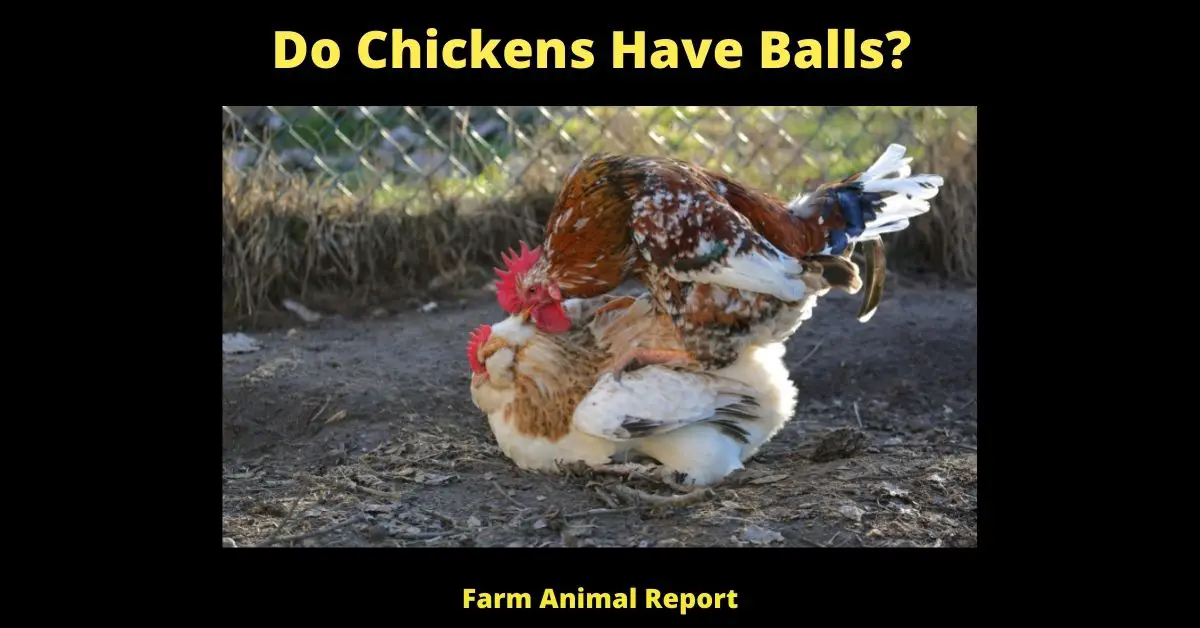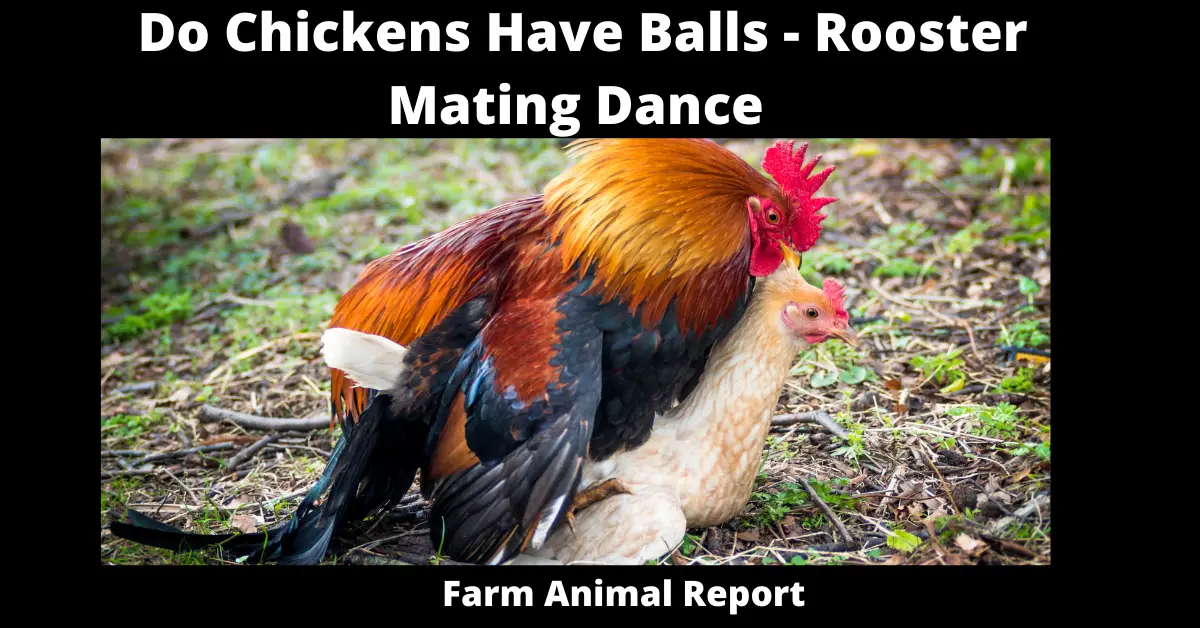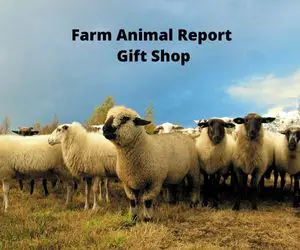Do Chicken Have Balls
Do Chicken Have Balls – As a General rule In Total Male chickens have two balls, In short, yes, roosters do have testicles, but you won’t be able to see them if you take a quick peek under your rooster’s tail and they don’t have a male appendage,
Since no penetration is involved, the act is simply called a “cloacal kiss.”. However, chickens are among those species that have balls inside their abdomen, located against their backbone in front of the kidneys. While a chicken with male sex organs is called a rooster, a chicken with female sex organs is called a hen.
Do Chicken Have Balls / Chicken Reproduction?
Do Chickens Have Sex – I have always been curious about the fantastic and wonderful coitus, sex that nature has devised to continue the progeny. My curiosity led me to study this topic extensively. So much research on the internet made me realize that people nowadays are searching a lot about chicken’s sex.
Do chicken Have Balls – First, it felt a little awkward, but later, I realized that there is very little information circulating on the internet about chicken sex. This article is full of information regarding chicken, especially the male chicken. So, if you are a farmer or a knowledge seeker, this article will satiate your thirst for knowledge.
The thing on which people are very curious is whether backyard chickens have balls? The answer is yes. Chickens have balls, but their balls are not visible from the outside. Backyard chicken’s balls are scientifically known as balls. Their Balls are located inside the body against the backbone.
Male chickens don’t have a male appendage, and this is the basis for developing confusion. However, chickens are among those species that have balls inside their abdomen, and they need them for all the obligatory work. They have quite a busy life as they wake up before dawn for crowing as loud as they can, and then, for fun, they have to deal with twenty or more than throughout the day.
12 Ways to Make Money by Chicken Farming—Extensive Guidelines for Chicken Farmers
What is a Chicken with Male Parts Called?
Chicken is a general term referring to the species, just like the word human. Chicken refers to both male and female chickens. While a chicken with male sex organs is called a rooster, a chicken with female sex organs is called a hen. Rooster and chicken differ in physical appearance as well as in genetics. Roosters are famous for having a bigger size, long and curving tail feathers, wattles, and comb.
Although hens also have wattles and comb, rooster’s wattles and comb are larger. Roosters are the ruler of the flock, and they tend to be bold and friendlier to people. Roosters and hens both fight in the flock, but roosters are more violent in their behavior.
When roosters want to have sex and want more often, they perform the mating dance by dropping their wings and moving circularly. Mating dance gives the stimulus to the hen, and she prepares to mate with her partner, hen inverts, also called a cloacal kiss.
Roosters are famous for their crow, and they can express more than 25 different sounds and have very sensitive hearing. Rooster starts crowing at the age of 4-5 months, and they also make warning sounds when some predator enters the flock. While in comparison, hens also make sounds to lure the chicks and harsh sounds when they lay eggs.
What is a Neutered Male Chicken Called?(roosters do not lay eggs)
A neutered male chicken is called a capon, and the process is called caponing. Castrating a chicken is to make the meat more tender and reduce the aggressive behavior of the rooster. The meat of a rooster is much more stringer and pungent, and people don’t prefer its taste. However, castration makes the male gain more weight because many calories are preserved by preventing it from mating. Therefore, farmers castrate roosters for financial benefits.
Caponizing was invented in Rome as law regarding the fattening of chicken. They found this strategy very effective as capon gains as much as twice the weight of a rooster.
A farmer does not need more than one rooster for a flock of ten hens. However, more than one rooster goes violent with each other and fights more often. Therefore, a rooster is more frequently killed when a farmer identifies one. Or, roosters are castrated to get more benefits, in terms of meat, from them. Moreover, farmers keep capons as pets because male chicken is much cuter and more playful.
Can a Chicken Become a Rooster?
Yes! A chicken becomes a rooster. Though rare, you can witness this at your farm. a hen can become a phenotypic rooster which means that she will have a male sex organ in her body. However, the genetic makeup will remain the same, and genetically she will be a hen. Some reports confirm the production of sperms in such roosters. However, the secondary male characters will develop, and she will then look like a normal rooster.
There is no magical mystery in that, as his process is purely scientific. Hens have one fully functional ovary on its left side. However, there are two gonads present at the embryonic stage, out of which only one becomes functional, and the other does not develop.
The underdeveloped gonads do not differentiate into a male gonad (testis), female gonad (ovary), or both (ovotestis). This undifferentiated gonad, the loophole, becomes the cause of the change of sex. Before puberty, something in genes happens that stops the development of the left ovary inside the hen.
The ovary has to suppress the development of the testis. So, in the absence of the ovary, the development of balls takes place, and the right gonad becomes a functional ball. It leads to male sex hormones that start developing male secondary sex characters in the hen. And ultimately, a hen becomes a rooster. No genetic change takes place; therefore, the hen is genetically a hen but phenotypically a rooster.
Do Roosters Die After Mating?
Rooster’s death after mating is nothing more than an old wives’ tale.
It is a supposed belief that has no scientific basis. However, certain animals die after mating, and no one has seen a rooster dying. Almost every one of us witnesses their mating process, but no one has seen him dying. I want to share an incident at a farm. The farmer in the morning opens the coop and lets the chickens move out. The rooster starts mating with hens, and the farmer goes to open other coops.
When he returns, he sees the rooster dead. He then takes the rooster for postmortem and finds that the rooster died of a heart attack. However, this is a memorable incident of its kind. Almost all the time rooster’s death does not take place after mating.
Some marsupials die when they know that their offspring will survive. Such sacrifices are very rare in mammals, though marsupials consider it worth sacrificing their lives for sex. Only those marsupials die after mating, whose breeding season is very short. They utilize their maximum energy and bear excessive stress during this short breeding season. It becomes the cause of their death.
Will Roosters Kill Hens?
Many flocks have been observed with more than one rooster that they get violent and fight a lot. Roosters fight for supremacy and sex. They become violent with each other and with a hen who mates with another rooster. This violent behavior most of the time hurt the hen and sometimes hurts to the point of death. Whereas if there are more than required roosters in the flock, each of them will be unable to satiate their desire for sex, and ultimately, they will have sex aggressively and more frequently.
You have noticed that roosters mate by mounting the hen and grabbing the comb, neck, feathers, or skin. It is very painful for hens, and if the rooster performs mating more than usual, it becomes out of patience for hens. A hen ( female chicken) mated more frequently will have its feathers plucked and pain in the back, When chickens reproduce naturally.
A rooster is heavier than a hen, and it is difficult to bear its weight on the back. Though rare, it happens when the rooster mates aggressively and frequently, the rooster dies. Therefore, it is best to have one rooster for ten hens. Your hens can do better with one rooster than many.
Are Hens Happier with a Rooster?
A rooster is a leader of this flock, protects the flock against any danger, and fulfills the desires of hens. So yes! Hens are happier with a rooster. Hens live better with their sexual mates because they need a sexual mate to satisfy their needs and desires.
Animals tend to select the leader of the flock. So if a flock does not have a rooster, one of the hens will have to take charge of the flock. It creates chaos among the other hens who are also willing to take charge, and there will be fights among them. The stronger female, however, leads the flock and adopts some of the traits of a rooster. And even the leader hen will start crowing like a rooster. So, you should not let this situation happen and keep a rooster in the flock. Hens can better adjust to a male leader than a female leader of the flock.
On the contrary, there are disadvantages to having roosters in the flock. More than one rooster creates chaos in the flock, and their aggressive and violent behavior is harmful to hens. In such conditions, hens don’t be happy with roosters. Therefore, for the sake of hen’s happiness, you should keep one rooster for ten hens.
Are You able to Neuter a Rooster?
Neutering or caponing a rooster is nowadays the duty of a veterinary professional. However, in the past, people caponized roosters on their own. But today, it is better to take the rooster to a professional to avoid any risk of contamination and other complications. In the past, people used to caponize the roosters at their farms. They used their finger to insert through the cloaca and crush the balls inside the abdomen. They did not use any anesthesia or analgesia.

However, there are non-surgical methods to caponize the rooster in which the estrogen implant is kept under the skin, and the rooster becomes unable to express male characteristics. This is called chemical castration, and you can do this yourself. But if you go for a surgical procedure, you should better consult a veterinary professional to do the job because he/she will perform the procedure under intensive care.
While performing a caponizing surgery, the surgeon opens the abdomen with an incision and locates the balls to cut and remove them. And, in the end, he/she may or may not suture the skin to close the abdomen. There are many risks that the surgeon takes responsibility for, and it is pretty much difficult for you to handle these risks.
Benefits of Neutering Roosters
If you have one rooster for a maximum of ten hens, you don’t need to caponize a rooster. The rooster will mate with the hens, and as a result, fertilized eggs will be produced. However, if you have more than one rooster in the flock and you don’t want fertilized eggs, or you want to farm only male chickens at your farm, you better do caponize. It will be better for you to caponize the roosters to avoid the chaos and aggression created by roosters.
Male chickens are bold, friendly, and playful with people; however, the hormonal surges are disturbing for them, the flock, and the farm keeper. Roosters are much more aggressive with their competitive partners in a flock. They always fight for dominance and sex and, as a result, harm themselves, hens, and sometimes the children at the farm.
Therefore, it is better to caponize the extra roosters in a flock and all the roosters at a rooster-only farm. After caponizing, the capon will behave more friendly and docile, and all its aggression will be diminished. They will give no harm to anyone else at the farm.
Understanding a Rooster’s Anatomy
There are many anatomical features to identify a rooster. First of all, we will discuss the external anatomy of a rooster. They possess a wattle and comb on their head, which is bigger and straighter than a hen. On their back, there are three anatomical regions, the cape starting from the neck, the back in the middle portion, and the saddle at the end.
After the saddle, the rooster possesses long feathers of the tail. In addition, they have two wings covered with feathers and a fluff region of small feathers on the abdomen area. They have a hock joint on the lower limbs where the upper leg (drum stick) and lower leg meet. Below the hock, there is a shank region and spur – the characteristic feature of a rooster. In addition, roosters possess claws on their toes.
The internal anatomy of a rooster is no different than other birds. However, it differs from a hen because of male sex organs. They possess balls in place of the ovary and uterus. However, the other organs and organ systems are the same as hens and other birds.
How does a Rooster Fertilize a Chicken egg?
Animals have a survival instinct, and they eat and reproduce for their survival. Therefore, reproduction is an essential part of their lives. Different animals have adopted other stimuli to trigger the females to have sex. While in the case of roosters, they perform a mating dance to trigger the hen.
First of all, roosters give a false alarm that they found something to eat so that hens come close to them. Then, when hens are somewhat away from the flock, they perform their mating dance. Roosters drop their wings, mostly the one in front of the hen and moving circularly. The hen gets the stimulus and gives a response to this stimulus.
Hens either sit down a little bit to allow the rooster to mount, move away from other hens to mate in loneliness, or runs away to show that she is not interested. When she will enable the rooster to mate, the rooster mount on her back, grab her neck, feathers, or even the skin, and bend down his back to implant the sperms into her body. This can be a painful procedure for the hen. Now the sperms are inside the hen to fertilize the eggs. Result baby chicks
How many Eggs can a Rooster Fertilize?
When the sperms are inside the female body, they travel through a duct to reach the area they fertilize with the female’s egg. Rooster implants many sperms inside the hen; many die while traveling in the duct, and others reach the area where fertilization occurs. Only the strong sperms fertilize the egg.
Out of all the sperms per mating, only 14 sperms can fertilize the eggs in a single mating. And this happens only when the hen is productive and is laying eggs. After fertilization, the egg is converted into a zygote. This zygote then starts its development to become a chick. In the case of hens, zygote development inside the egg happens only when the egg is kept in an optimum environment, under the hen or an environment-controlled hatchery.
There is one fact that hen keeps laying eggs even without a rooster. It means that there is no need for a rooster to the female to lay eggs. However, the eggs are produced without sperm and hence are not fertilized. A non-fertilized egg cannot develop into a chick, and it can only be used at the table for eating.
How Often Can a Rooster fertilize a Hen?
Roosters seem very fond of mating, and they do it more often. It can be funny to say that they love their partners much.
However, a rooster can mate with hens 10-30 times a day.
Roosters are very active, and they need hens to utilize their energies; otherwise, they will not be stable. Roosters have a bigger pool of energy, and they need it drained as it is created. Therefore, you should manage the number of hens according to the number of roosters.
If a flock has more than one rooster and the number of hens is lesser than the required amount, the roosters will be stressed. They will fight with other roosters or mate with the hens more than the hen’s capacity. They will hurt the hens physically, and their health will be compromised.
Mostly the hens in a flock having a greater number of roosters will have their feathers plucked off. And these hens will be weak and lethargic. At the farms where best practices are followed, farmers keep one rooster for ten hens so that their sexual energy can be satisfied without hurting hens and other roosters.
Will Roosters Sit on eggs?
Rooster doesn’t exhibit the behavior of nesting nor do they sit on eggs. Some other birds show this behavior, and their males take their turn to sit on the eggs. But this is not the case with chickens. Roosters take part, neither in building a nest nor sitting inside it. Therefore, it is the responsibility of the female, only hens, to build the nest and sit on the eggs.
However, the capons, and neutered roosters may show this behavior, some others imitating the hen. Capons don’t crow or have a large comb, and they indulge in male behaviors. They can take part in sitting on the eggs and can hatch them. On the contrary, roosters are proper male chickens and don’t exhibit any behavior resembling the hen. Moreover, roosters don’t spend much time inside the nest with the hen.
Are Roosters able to Breed different Types of Chickens?
Rooster is free to mate with any breed of chicken, and you don’t need to worry about the offspring. This is because the offspring will be mixed-breed in this situation. And it is common for chickens to produce mixed-breed offspring. You may have seen farmers keeping a variety of breeds on the farm.
And roosters don’t only mate with the hen of their breed; rather, they mate with the hen of every breed. Therefore you need to worry about having a mixed variety of chickens at your farm as long as you are not concerned with purebred chickens.
Can Male Chickens Lay Eggs?
The quick answer is no, male chickens cannot lay eggs. Chickens are sex-linked, meaning that their gender is determined by their genetics. Females have two Z chromosomes, while males have a Z and a W chromosome.
The difference in chromosomes means that the reproductive organs develop differently in male and female chickens.
Male chickens have testes (Located in The male Body) that produce sperm, while female chickens have ovaries that produce eggs. This difference means that it is physically impossible for a male chicken to lay an egg.
However, male chickens can sometimes be used for egg production in a process known as Reverse Sexing. In this process, the male chicks are given hormones that cause them to develop some of the characteristics of females.
This can include the development of functional ovaries and the ability to lay eggs. However, this process is not commonly used due to the high cost and potential health risks associated with it. As a result, most egg-laying operations use only female chickens.
Do Roosters have Testicles?
A rooster is a male chicken. All male chickens have two testicles, which are located inside the abdomen near the kidney. The testicles produce sperm, which is used to fertilize the eggs of a female chicken.
When a rooster mates with a hen, the sperm is deposited in the hen’s reproductive tract, where it fertilizes the eggs. Although roosters do not have external genitalia, they do have a small penis-like organ called a papilla.
This organ is used to transfer sperm from the rooster to the hen during mating. Roosters typically mate with multiple hens, and they will often mate several times a day. While this may seem like a lot of work, it helps to ensure that the rooster’s offspring are healthy and genetically diverse.
What are Leydig Cells in The Rooster?
Leydig cells are found in the testes of mammals and produce testosterone. In the case of the rooster, these cells produce androstenedione, which is converted into testosterone by the action of enzymes.
The testosterone produced by Leydig cells is responsible for the development of male secondary sexual characteristics such as the growth of facial and body hair, deepening of the voice, and increased muscle mass.
These cells also play a role in spermatogenesis, the process by which sperm are produced. Leydig cells are named after German anatomist Franz Leydig, who first described them in 1856.
How do Roosters Mate with Female Chickens (Cloacal Kiss)?
Roosters mate with hens by a process called cloacal kissing. This is when the male presses his vent, which contains his reproductive organ, against the hen’s vent. The vents of both animals touch and the male pass sperm into the female reproductive system.
The cloaca is the common opening for the digestive, urinary, and reproductive tracts in birds. Chickens do not have external genitalia like mammals, so cloacal kissing is the only way for roosters to mate with hens. This usually happens while the hen is perched on a perch or on the ground.
The rooster will mount her from behind and align his cloaca with hers. Once they are touching, they will begin to rub their vents together and exchange sperm. Cloacal kissing can be a violent process, and sometimes hens can be injured or killed by aggressive roosters. For this reason, many farms will only allow one rooster for every ten hens
Do Male Chickens have Balls?
When it comes to chickens, there is a lot of misinformation out there. One common question that people ask is whether or not male chickens have balls. The answer is yes, they do! However, their testicles are located inside their body, near the base of their spine.
This is different from mammals, who have their testicles located outside of their body in a sac called the scrotum. In chickens, the testicles are small and contained within the body to help keep them warm and protected. While you may not be able to see them, rest assured that male chickens do have balls!
Do all Chickens have Balls? No Hens and Capons
Chickens are interesting creatures, to be sure. One query that I get asked a lot is whether all chickens have balls. The answer, my friends, is no. Hens – female chickens – do not have balls.
Capons – male chickens that have been castrated – also do not have balls. So what about roosters, you ask? Now, that’s a different story. All roosters have balls. Hope that cleared things up for you!
Roosters Anatomy
For thousands of years, humans have bred chickens for their meat, eggs, and feathers. The domesticated chicken is a descendant of the red junglefowl, Gallus gallus, which is native to Asia. The male chicken, or rooster, is a unique and important part of the modern poultry industry.
The anatomy of a rooster is quite distinct from that of a hen. Roosters are larger and more muscular than hens. They also have a number of physical and behavioral characteristics that set them apart. The most obvious differences between males and females are the presence of a comb, wattles, and spurs.
The comb is a fleshy crest on the top of the head. It is usually red, but can vary in color depending on the breed. The wattles, which are the fleshy lobes on either side of the neck, are also usually red, but can range from pink to deep purple. The spurs are a pair of sharp claws on the back of the legs. These are used for combat and defending the flock.
Roosters also have different coloring than hens. Most breeds have a combination of red, black, and white feathers. Roosters are usually more colorful than hens, with brighter red and iridescent feathers.
Roosters are also known for their loud and proud crowing. This is a territorial display that can be heard up to a mile away. The crowing is a way for the rooster to announce its presence to other males and to protect its territory.
The cock’s reproductive anatomy is also different from that of a hen. The rooster’s testes are located in the abdomen, and when breeding performs the clioatal Kiss is located at the base of his tail. He also has two large, white, fleshy organs called the “comb” and “wattles”. These serve as the primary sexual organs, and the size of the comb and wattles indicates the cock’s fertility.
In addition to its physical differences, a rooster also has different behaviors than a hen. Roosters are very territorial and protective of their flock. They can also be aggressive and will attack other chickens if they feel threatened. Roosters will also defend the flock from predators, and they are able to recognize the sound of approaching predators and sound the alarm.
The male chicken plays an important role in the poultry industry. They are used for breeding and to improve the quality of the eggs and meat produced by the flock. Roosters also provide protection for the flock and are an essential part of the poultry industry.
Final Thoughts
This article has comprehensively explained almost every topic about roosters and, in comparison, with hens. If you have a chicken farm, I believe you will not lack information regarding the behavior, biology, psychology, and anatomy of roosters and hens. This article has discussed in detail every subject regarding chickens. Now you will observe your chicken more interestingly at your farm and understand their specific behaviors because there is always a scientific logic behind every behavior.





